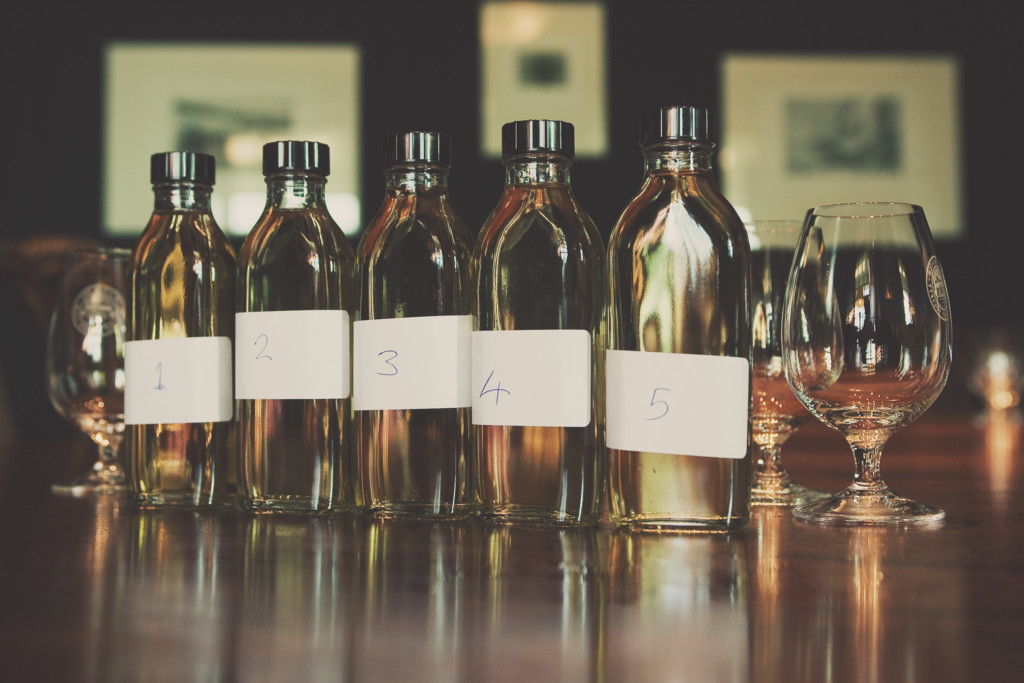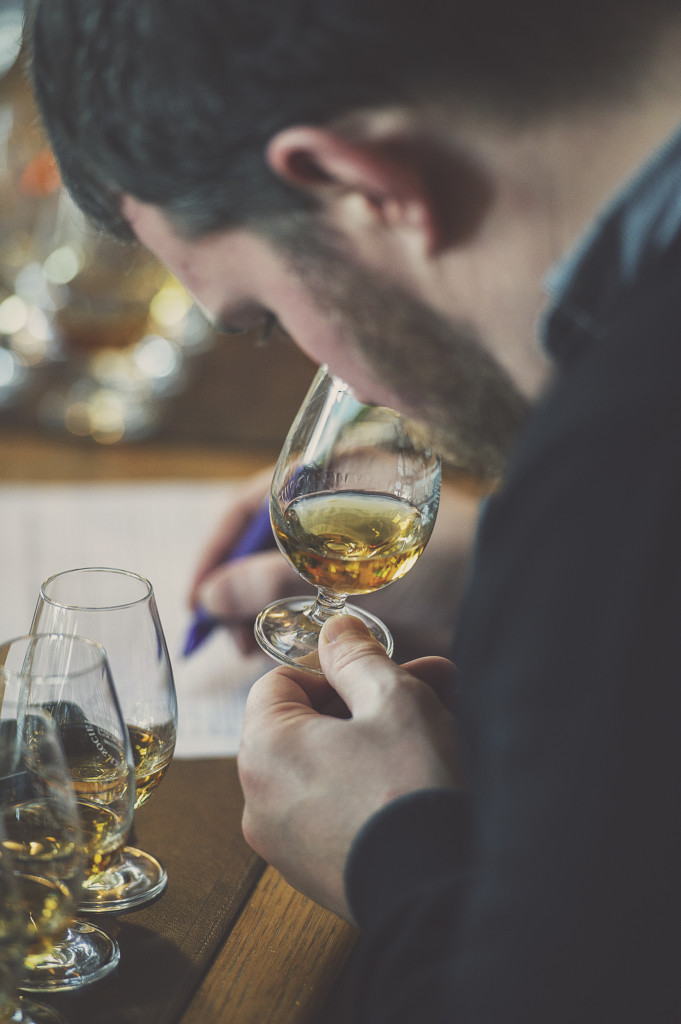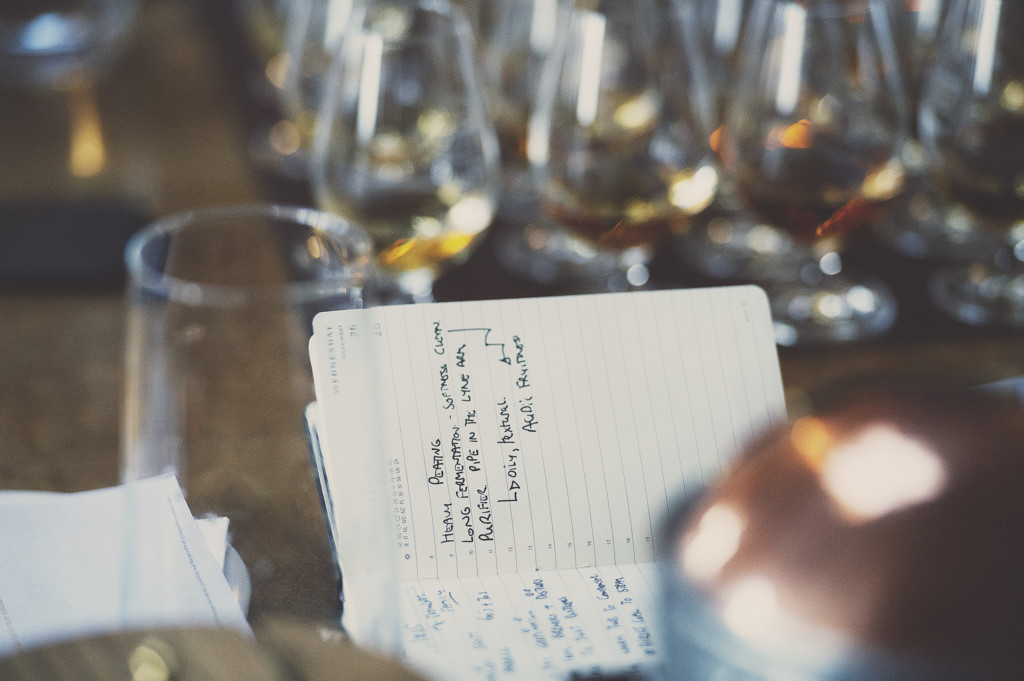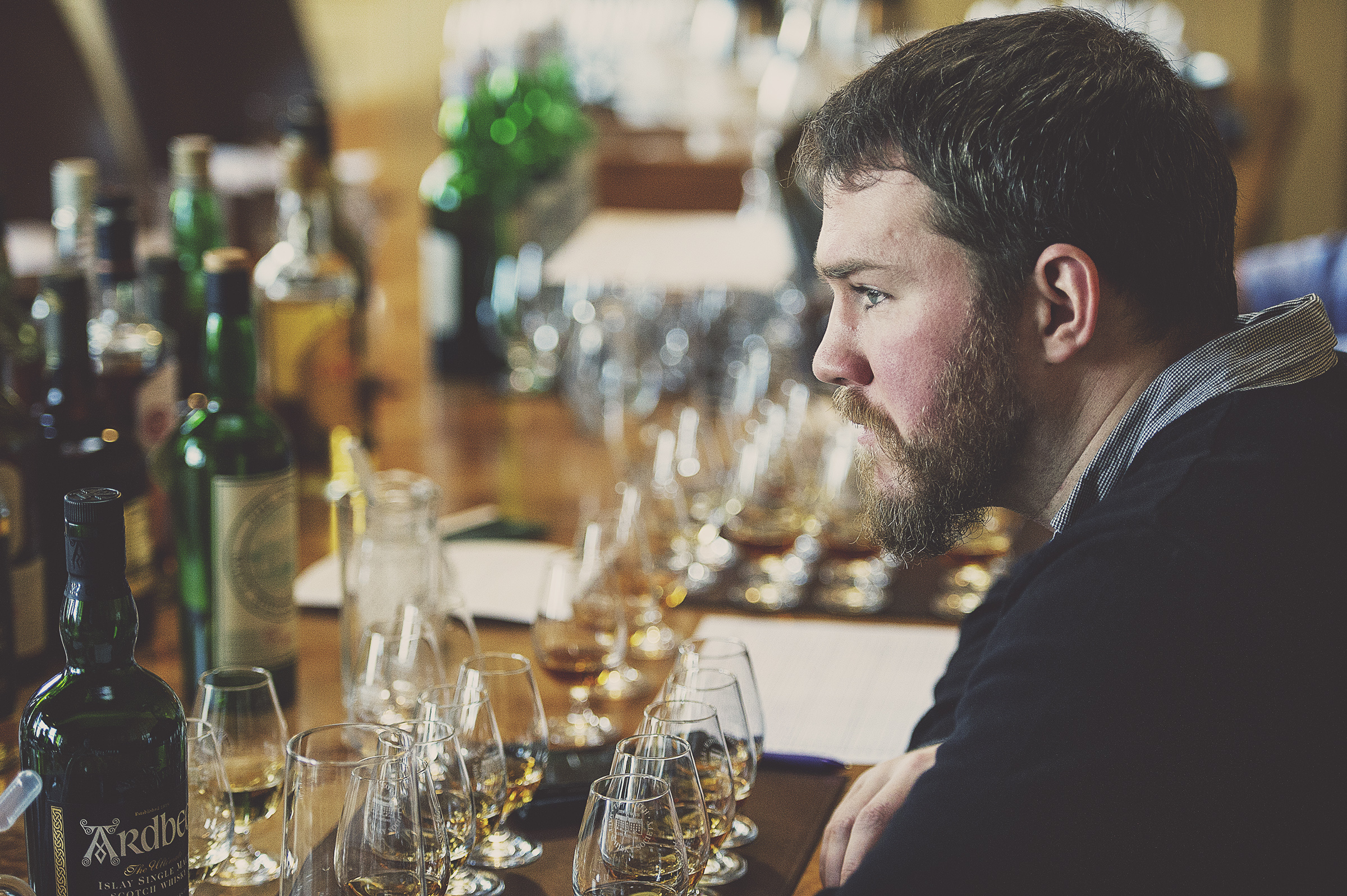Originally published in Unfiltered #90.
Words: Angus MacRaild
Tasting Panel. Two words which have become synonymous with the Society over the years and which have been a constant in the Society’s communications, marketing and coverage since the early days of the 1980s. So ubiquitous are they, in fact, that it has become easy to overlook the significance of what the Tasting Panel represents, how it works and what it has delivered for the Society’s members over the years. Angus MacRaild has been one of the Panel’s chairs for the past seven years, and here reflects on its functions, and what he’s learned from his role
The Tasting Panel has existed in one form or another since the Society started out in the kitchen of founder Pip Hills’s home at 10 Scotland Street in Edinburgh. He describes that group as a “motley bunch”, made up of a cross-section of Edinburgh society who “had experience of drinking whisky and were also handy with words.
In the Scotland of 1983, a fair proportion of the population could be said to have met those criteria,” recalls Pip in his book Maverick – The Founder’s Tale, essential reading for an insight into the Society’s origins.
As well as evaluating the samples of whisky, the Tasting Panel started to explore a language they could use to describe single cask, single malt — something that had never been done before. In the early 1980s, whisky was described only in terms of how old it was or where it came from, but with little reference to its actual flavour. All that was about to change.

SMWS sample bottles
The Society still selects its bottlings using this process today, and even in instances where Euan and the Spirits Team have conceived and created small-batch products, those batch samples still undergo quality control and assessment via the Tasting Panel.
Perusing an Outturn, or the gantry at one of the Society’s Members’ Rooms, you might be forgiven for thinking that the Tasting Panels are frivolous. After all, there’s no shortage of names and notes which veer into the playful and surreal. But the nature of the Society’s presentation is juxtaposed by a rigorously designed and controlled process of quality assessment that is today’s Tasting Panel.
How it works
For starters, Panels are always at least four people these days, and every sample has to pass all four Panel members to move forward for bottling. The makeup of each Panel is varied and diverse. There are tasters with years of industry experience, who bring uniquely authoritative and technical insight. There are also younger enthusiasts, people who might just be starting out on their whisky journey or career, who bring a fresh perspective and interrogate whiskies in ways those of us with more experience might not think to.
Any prospective panellist has to pass a sensory evaluation test and is then given a period of ‘probation’ before they are fully signed up.
A cask sample is shared amongst the panellists, and notes are recorded for neat nose, neat palate, reduced nose and reduced palate. A score is given to each of the four aspects of the cask sample, and then overall comments and assessments are discussed among the Panel and recorded. Within this process, there are long stretches of concentrated silence, often followed by discussions that can range from the scientific to the philosophical, to outright giggling – it’s usually in those moments that the inspiration for some of the more outlandish bottling names can strike. Out of that process, the cumulative notes of all Panel members are then worked into bottle notes and names by the Panel chairperson.

Angus nosing whisky
Notes from a tasting panel chairperson
I started working as a Panel chairperson back in 2015, and during that time it has been a part of my professional life that I have cherished and learned a great deal from. Here are just some of the main takeaways from my time on the Panel thus far…
Whisky is better than it used to be…
On the Panel, we taste a lot of cask samples, often a lot of similar cask types as well – many first and second-fill barrels, and many refill hogsheads. What has struck me consistently over the years is that the overall quality of Scotch whisky in particular has improved from where it was in the mid-1990s and earlier. Now, it’s arguable that with this higher average consistency, some of the peaks of stellar beauty have disappeared, but the persistence of quality always strikes me and has caused me to reassess my opinions about a number of distilleries.
There’s amazing whisky from all over the world…
A sibling observation to point one, but there really are some amazing whiskies being made in places we’d never have thought about a few years ago. India, Sweden, France, Australia and New Zealand are all joining the whisky party in a striking way (to name but a few). And the overarching impression is that whisky truly is a global spirit now. Some argue this is a challenge to Scotch. I would argue that’s true but also a very good and necessary thing.
Tasting spirits is like exercise…
Being good, or professional, or rigorous with tasting spirits and trying to do it to a reasonably consistent level, is not a place you arrive at and remain. Rather, it is like most physical disciplines, something that requires constant exercise, practice and general maintenance. Tasting is the flexing of your olfactory system and mind in a manner which keeps it honed. This was one of the main motivations for me to start working on the Panel in the first place, and today remains one of the key reasons why I’m still grateful to be doing this work.
Vocabulary is power…

The initial, and perhaps most obvious, function of the Panel is quality control. But beyond this, it also serves as the Society’s key means of communicating to its members the nature of the spirits it bottles. Doing the Panel has served as a constant reminder of the importance of vocabulary, of description and of how that serves the members by acting as their first inroad into a bottling.
By having a diverse range of opinions and experiences on each Panel, that descriptive power is multiplied fourfold. I’ve lost count of the number of times where someone has hit upon a certain description which made far more sense than what I’d written myself. Not to mention the power of a greater diversity of cultural reference points, particularly around flavour.
Having that greater pool of descriptors to draw upon when writing a bottle note means those notes (hopefully) become relevant to a greater breadth of the membership.
Four heads are better than one…
Much in the same vein as the previous point, and perhaps obvious, but when assessing spirits, the cumulation of different experiences and opinions lends the Tasting Panel a unique power. It’s more democratic, more diverse, and stands apart from the highly traditionalist (and boring!) notions of the ‘master blender’; these fusty ideas about the auteur of whisky are dispensed with in favour of a process which pairs quality control with something much more interesting than notions of scientists in lab coats: fun! The Panel is a process that reminds us of its roots: that whisky is social, that it is – ultimately – a drink, and its true enjoyment lies in the process of its destruction and in the sharing of that experience with others.
I’ve had a lot of fun on the Panel over the years and I hope to be able to continue to contribute to it, to learn from the process, to learn from the many, varied people it has been my pleasure to work with there and to keep inventing playful and surreal bottling names for many a year to come.
Unfiltered Magazine is The Scotch Malt Whisky Society’s premium whisky knowledge magazine delivering quality content exclusively to members in an immersive multimedia format monthly. To view Unfiltered #90 in its entirety (as well as all back issues), log in and access the members’ portal or join The SMWS today — the world’s most colourful whisky club.








